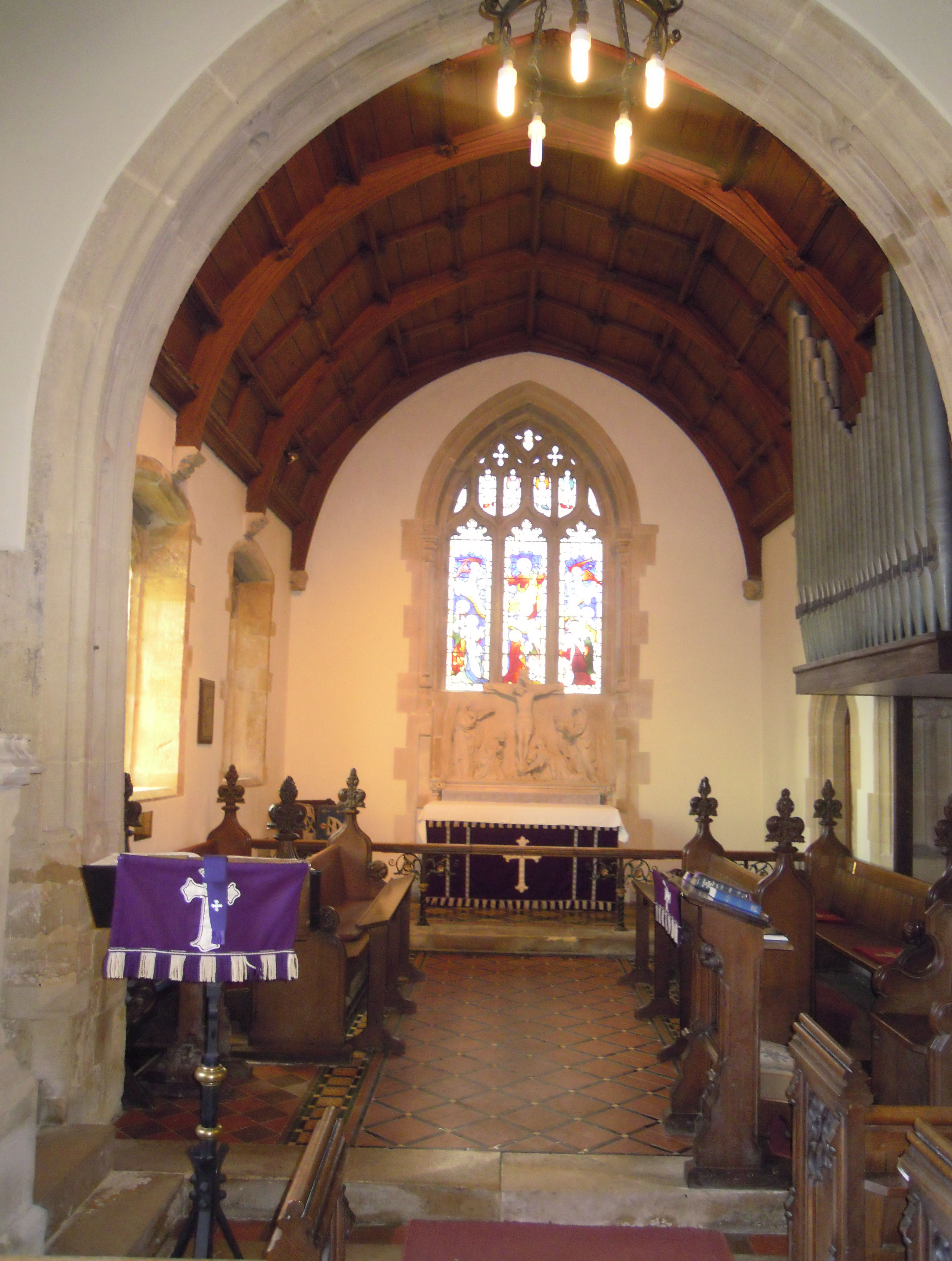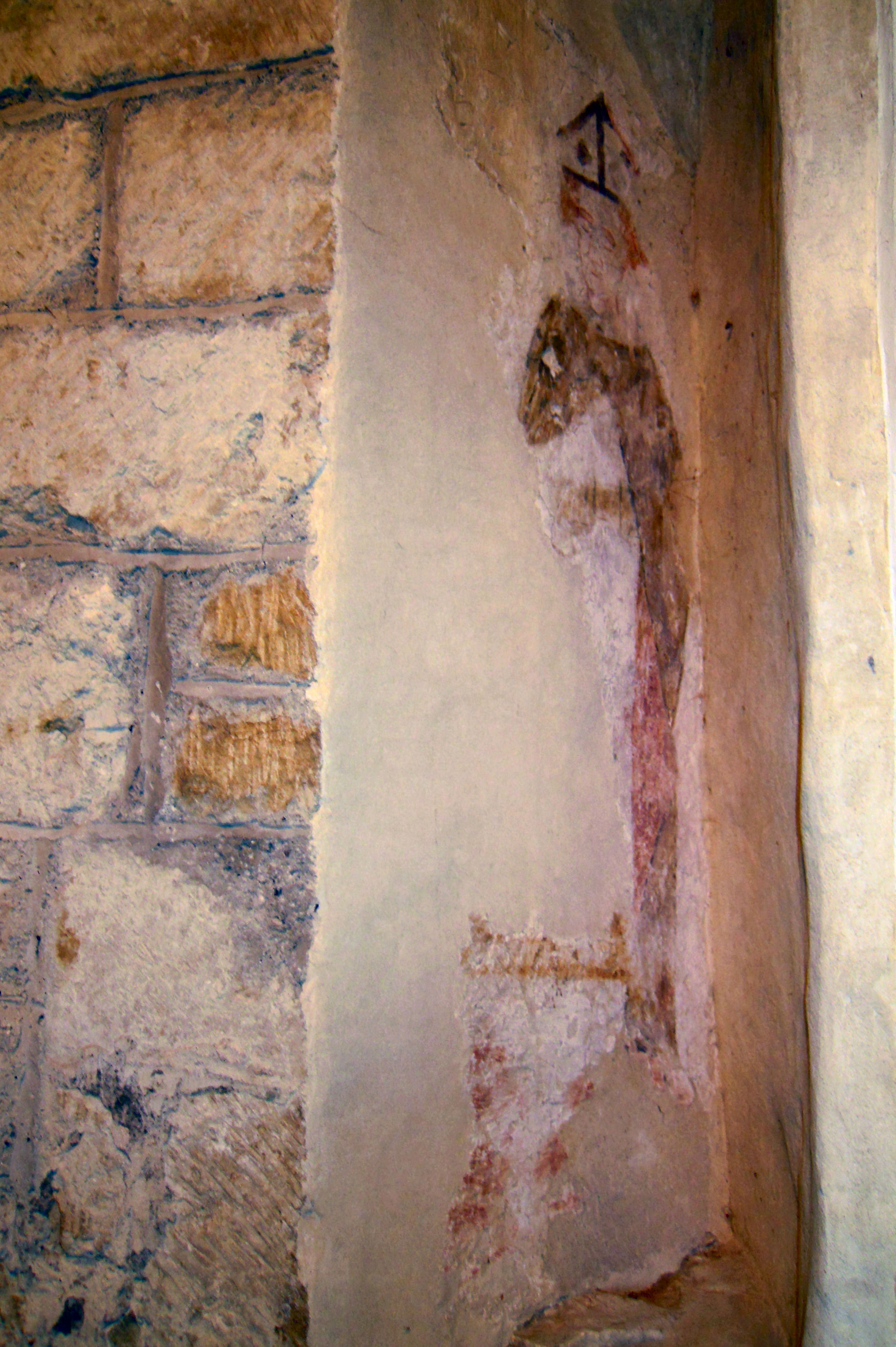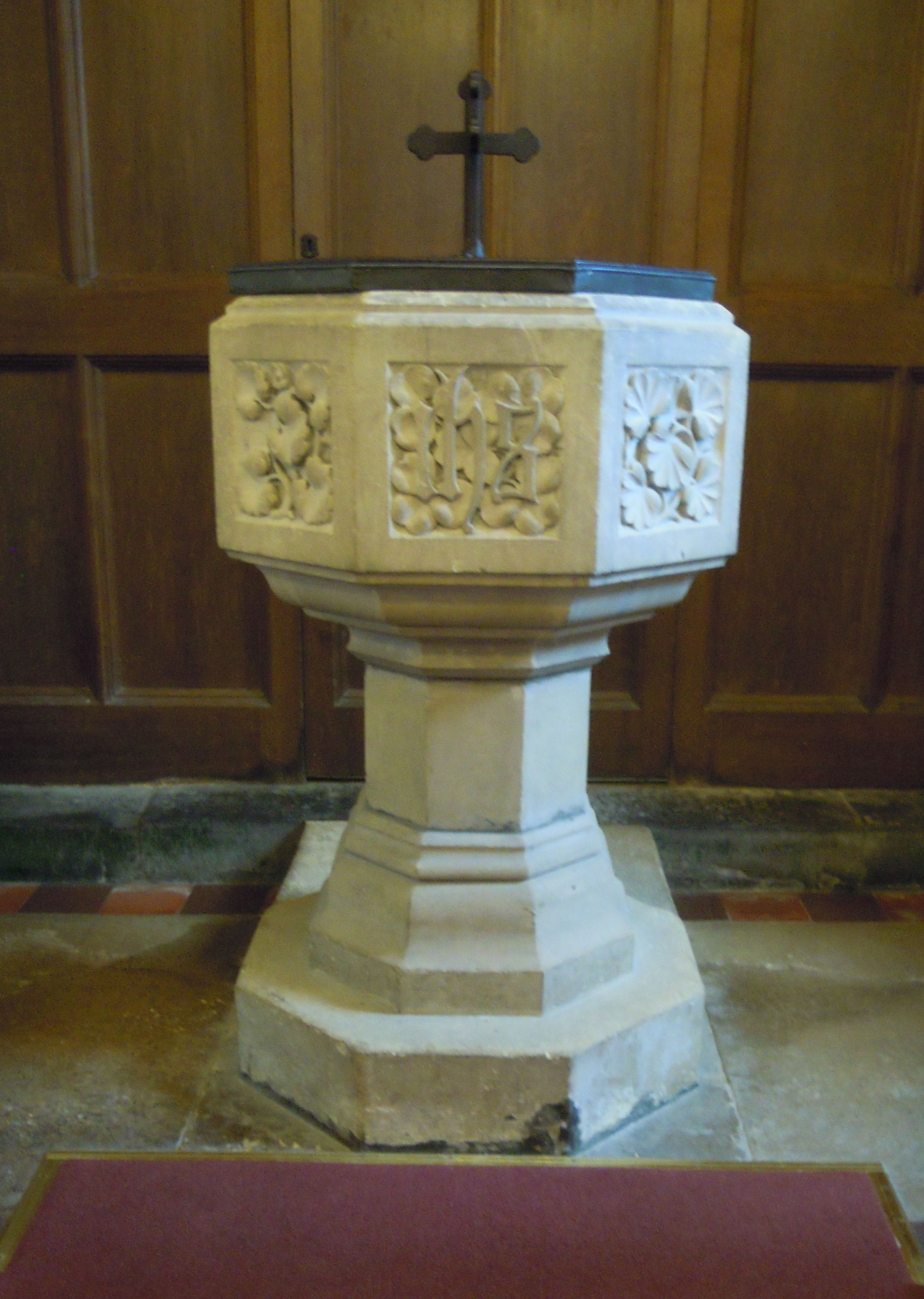Church of St Thomas à Becket, South Cadbury on:
[Wikipedia]
[Google]
[Amazon]
 The Church of St Thomas à Becket is the
The Church of St Thomas à Becket is the
-


 The
The
/ref> The porch has been much restored but the inner and outer doorways, windows and the
Church of St Thomas à Becket, South Cadbury - A Church Near You
-
 The Church of St Thomas à Becket is the
The Church of St Thomas à Becket is the Anglican
Anglicanism is a Western Christian tradition that has developed from the practices, liturgy, and identity of the Church of England following the English Reformation, in the context of the Protestant Reformation in Europe. It is one of t ...
parish church
A parish church (or parochial church) in Christianity is the church which acts as the religious centre of a parish. In many parts of the world, especially in rural areas, the parish church may play a significant role in community activities, ...
for the ancient village of South Cadbury in Somerset
( en, All The People of Somerset)
, locator_map =
, coordinates =
, region = South West England
, established_date = Ancient
, established_by =
, preceded_by =
, origin =
, lord_lieutenant_office =Lord Lieutenant of Somerset
, lor ...
and is dedicated to Thomas Becket
Thomas Becket (), also known as Saint Thomas of Canterbury, Thomas of London and later Thomas à Becket (21 December 1119 or 1120 – 29 December 1170), was an English nobleman who served as Lord Chancellor from 1155 to 1162, and the ...
. Today it is one of the 'Camelot
Camelot is a castle and court associated with the legendary King Arthur. Absent in the early Arthurian material, Camelot first appeared in 12th-century French romances and, since the Lancelot-Grail cycle, eventually came to be described as th ...
Churches' of South Somerset in the Diocese of Bath and Wells
The Diocese of Bath and Wells is a diocese in the Church of England Province of Canterbury in England.
The diocese covers the county of Somerset and a small area of Dorset. The Episcopal seat of the Bishop of Bath and Wells is located in the ...
and has been a Grade II* listed building
In the United Kingdom, a listed building or listed structure is one that has been placed on one of the four statutory lists maintained by Historic England in England, Historic Environment Scotland in Scotland, in Wales, and the Northern I ...
since 1961.Church of St Thomas à Becket, South Cadbury-
Historic England
Historic England (officially the Historic Buildings and Monuments Commission for England) is an executive non-departmental public body of the British Government sponsored by the Department for Digital, Culture, Media and Sport. It is tasked w ...
database The church was much restored in the 1850s and 1870s.



 The
The Domesday Book
Domesday Book () – the Middle English spelling of "Doomsday Book" – is a manuscript record of the "Great Survey" of much of England and parts of Wales completed in 1086 by order of King William I, known as William the Conqueror. The manusc ...
of 1086 states that a priest (clericus) here had half of geldable land, which indicates an important church was on the site then. The dedication is to Thomas Becket
Thomas Becket (), also known as Saint Thomas of Canterbury, Thomas of London and later Thomas à Becket (21 December 1119 or 1120 – 29 December 1170), was an English nobleman who served as Lord Chancellor from 1155 to 1162, and the ...
who was martyred at Canterbury Cathedral
Canterbury Cathedral in Canterbury, Kent, is one of the oldest and most famous Christian structures in England. It forms part of a World Heritage Site. It is the cathedral of the Archbishop of Canterbury, currently Justin Welby, leader of the ...
in 1170. The first recorded Rector at South Cadbury is Peter de Burg in 1265, when the Cult of St Thomas would have been at its height and which makes it likely that the early wall painting (restored in 1984) of a bishop in cope and mitre seen on the splay of a window in the south aisle may represent St Thomas himself.
Built of cary and lias stone, mostly ashlar
Ashlar () is finely dressed (cut, worked) stone, either an individual stone that has been worked until squared, or a structure built from such stones. Ashlar is the finest stone masonry unit, generally rectangular cuboid, mentioned by Vitruv ...
, with some Doulting stone
Doulting Stone Quarry () is a limestone quarry at Doulting, on the Mendip Hills, Somerset, England.
At present there are only three quarries quarrying Doulting stone. The largest, The Doulting Stone Quarry, was producing building stone in Rom ...
dressings, the church largely dates from the 13th and 15th centuries, but was widely restored in 1874. Many of the fittings date from this time. However, the tower with its turret, pinnacles and gargoyle
In architecture, and specifically Gothic architecture, a gargoyle () is a carved or formed grotesque with a spout designed to convey water from a roof and away from the side of a building, thereby preventing it from running down masonry wa ...
s was built in the 14th-century and has a peal of six bells, while the church also boasts a 15th-century roof with angel brackets and carved bosses, and an early wall painting of St Thomas. The church is a Grade II* listed building
In the United Kingdom, a listed building or listed structure is one that has been placed on one of the four statutory lists maintained by Historic England in England, Historic Environment Scotland in Scotland, in Wales, and the Northern I ...
. Church of St Thomas à Becket, South Cadbury - Camelot Churches database/ref> The porch has been much restored but the inner and outer doorways, windows and the
chancel
In church architecture, the chancel is the space around the altar, including the choir and the sanctuary (sometimes called the presbytery), at the liturgical east end of a traditional Christian church building. It may terminate in an apse.
...
arch belong to the later Perpendicular Period
Perpendicular Gothic (also Perpendicular, Rectilinear, or Third Pointed) architecture was the third and final style of English Gothic architecture developed in the Kingdom of England during the Late Middle Ages, typified by large windows, four-ce ...
. The arcade is part of the original Early English building and dates from about 1280. The pillars are quatrefoil and have moulded capitals and decorative rings; the tower arch dates from the same period. In 1780 the gallery was moved from the bottom of the body of the church, where it hid the belfry arch. The Mary and Martha Window is a memorial to the Rev. James Arthur Bennett who was Rector from 1866 to 1890. It was due to his scholarly supervision that the restoration of 1874 was so successful. The chancel
In church architecture, the chancel is the space around the altar, including the choir and the sanctuary (sometimes called the presbytery), at the liturgical east end of a traditional Christian church building. It may terminate in an apse.
...
itself was entirely rebuilt in 1874 with the exception of the two windows to the North, which were preserved so far as the stonework allowed. Early in the 19th-century the East window was cut down to form a window for the vestry
A vestry was a committee for the local secular and ecclesiastical government for a parish in England, Wales and some English colonies which originally met in the vestry or sacristy of the parish church, and consequently became known colloquiall ...
. The present East Window dates to the restoration of 1874 and the glass depicting the Ascension is by Clayton and Bell
Clayton and Bell was one of the most prolific and proficient British workshops of stained-glass windows during the latter half of the 19th century and early 20th century. The partners were John Richard Clayton (1827–1913) and Alfred Bell (1832 ...
, as is all the glass in the church from that period. The finely carved Crucifixion Scene which stands above the altar was erected in 1870 and is by Thomas Earp Thomas Earp may refer to:
* Thomas Earp (politician)
* Thomas Earp (sculptor)
{{hndis, Earp, Thomas ...
.Guide, pg 2
The pulpit
A pulpit is a raised stand for preachers in a Christian church. The origin of the word is the Latin ''pulpitum'' (platform or staging). The traditional pulpit is raised well above the surrounding floor for audibility and visibility, acces ...
stands on an old entrance to the rood loft. It is made of Bath stone
Bath Stone is an oolitic limestone comprising granular fragments of calcium carbonate. Originally obtained from the Combe Down and Bathampton Down Mines under Combe Down, Somerset, England. Its honey colouring gives the World Heritage City of ...
and was carved for the restoration of 1874. A single panel from the earlier pulpit survived at the time and was used as a model for the pew-ends in the nave
The nave () is the central part of a church, stretching from the (normally western) main entrance or rear wall, to the transepts, or in a church without transepts, to the chancel. When a church contains side aisles, as in a basilica-typ ...
. All the wood in the church dates to this period with the exception of the tower door and screen. The niche behind the pulpit is in its original position, as is the squint or hagioscope
A hagioscope (from Gr. ''άγιος'', holy, and ''σκοπεῖν'', to see) or squint is an architectural term denoting a small splayed opening or tunnel at seated eye-level, through an internal masonry dividing wall of a church in an obliqu ...
in the south chancel arch, which was made to allow worshippers a view of the altar during Mass. The baptismal font
A baptismal font is an article of church furniture used for baptism.
Aspersion and affusion fonts
The fonts of many Christian denominations are for baptisms using a non-immersive method, such as aspersion (sprinkling) or affusion (pouring). ...
was placed in the church in 1871; no trace of an earlier font survives except for a pewter bowl which was used for baptisms for many years until it was stolen in 1991.Nikolaus Pevsner
Sir Nikolaus Bernhard Leon Pevsner (30 January 1902 – 18 August 1983) was a German-British art historian and architectural historian best known for his monumental 46-volume series of county-by-county guides, '' The Buildings of England'' ...
, ''Buildings of England, South and West Somerset'' (1958)
The south aisle was rebuilt during the restoration of 1853 but holds a 14th-century piscina
A piscina is a shallow basin placed near the altar of a church, or else in the vestry or sacristy, used for washing the communion vessels. The sacrarium is the drain itself. Anglicans usually refer to the basin, calling it a piscina. For Roman Ca ...
. The nave
The nave () is the central part of a church, stretching from the (normally western) main entrance or rear wall, to the transepts, or in a church without transepts, to the chancel. When a church contains side aisles, as in a basilica-typ ...
roof is 15th-century and has been repainted so that the carved bosses and angel brackets stand out. The rib and panel barrel vault roof in the chancel
In church architecture, the chancel is the space around the altar, including the choir and the sanctuary (sometimes called the presbytery), at the liturgical east end of a traditional Christian church building. It may terminate in an apse.
...
dates to 1874 and replaces one of 1790 which proved not to be effective.
The 18th century poet
A poet is a person who studies and creates poetry. Poets may describe themselves as such or be described as such by others. A poet may simply be the creator ( thinker, songwriter, writer, or author) who creates (composes) poems (oral or w ...
and satirist
This is an incomplete list of writers, cartoonists and others known for involvement in satire – humorous social criticism. They are grouped by era and listed by year of birth. Included is a list of modern satires.
Under Contemporary, 1930-196 ...
Charles Churchill was at one time curate
A curate () is a person who is invested with the ''care'' or ''cure'' (''cura'') ''of souls'' of a parish. In this sense, "curate" means a parish priest; but in English-speaking countries the term ''curate'' is commonly used to describe clergy ...
at South Cadbury.
References
External links
Church of St Thomas à Becket, South Cadbury - A Church Near You
-
Church of England
The Church of England (C of E) is the established Christian church in England and the mother church of the international Anglican Communion. It traces its history to the Christian church recorded as existing in the Roman province of Brit ...
website
{{DEFAULTSORT:South Cadbury, Saint Thomas à Becket
13th-century church buildings in England
15th-century church buildings in England
Church of England church buildings in South Somerset
Grade II* listed buildings in South Somerset
Grade II* listed churches in Somerset
Churches in Somerset
South Somerset